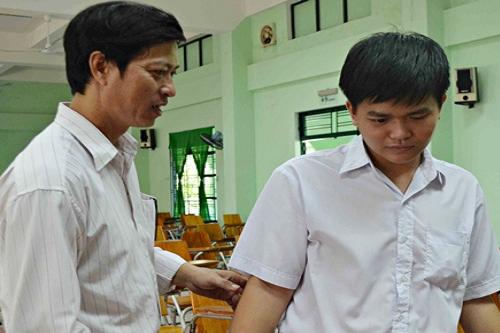

Scientists say they have found solutions that not only reduce the effects of climate change but also make money from the changes.
For example, the Centre for Hydro-Meteorological Forecasting said the water level of the Red River in the lower course falls deeply in the dry season. The highest peak measured at some places in the dry season of 2009 was only 1.6 meters at times, the deepest low since 1902.
The drop in water levels has led to the intrusion of salt water, a shortage of irrigation water, difficulties in waterway transport and degrading of the Red River landscape.
Dr. Doan Tam Hoe from the Hanoi Civil Engineering University believes that the problem can be settled by a simple solution: building dams at the end of the river branches near estuaries to regulate the water level.
“The dams can be operated in an easy and flexible way, which returns the natural flow to the river when necessary,” Hoe said.
Hoe said that six dams need to be built in Hanoi, near the Ba Lat and Ninh Co estuaries, at the end of of the Dao, Luoc and Duong Rivers, and one dam at the Tra Ly estuary.
With a system of six dams, the water level of the Red River in Hanoi could be maintained at a level of four to five meters, which is good for agricultural production.
He has also suggested building a system of roads and bridges along the coastline, saying that if the road and bridge system was coordinated with the dam system, Hanoi would be able to take full advantage of the fresh water before it runs to the sea.
Meanwhile, Dr. Nguyen Thu Hanh from the Tourism Sustainable Development Union has proposed turning floods into a tourism opportunity.
Hanh believes there are many hidden values behind the severe natural conditions which can be developed into attractive tourist products.
Hanoi, for example, can design tours to destinations that suffer from heavy rains and floods. Though warning that this would require consultancy from scientists in many different fields, including tourism, hydro-meteorology, environment and architecture, she believes that the potential for disaster-tourism development is great.
“The sightseeing trips on boats in the old quarter of Hang Ngang and Hang Dao streets on days of flooding would be original and attractive tours to foreign travelers,” she said.
“I can imagine that baked potatoes, boiled corn and roasted peanuts could be the most suitable kinds of food for the travelers,” she added.
Meanwhile, the West Lake area, with its large space, is good for travelers who want to witness storms.